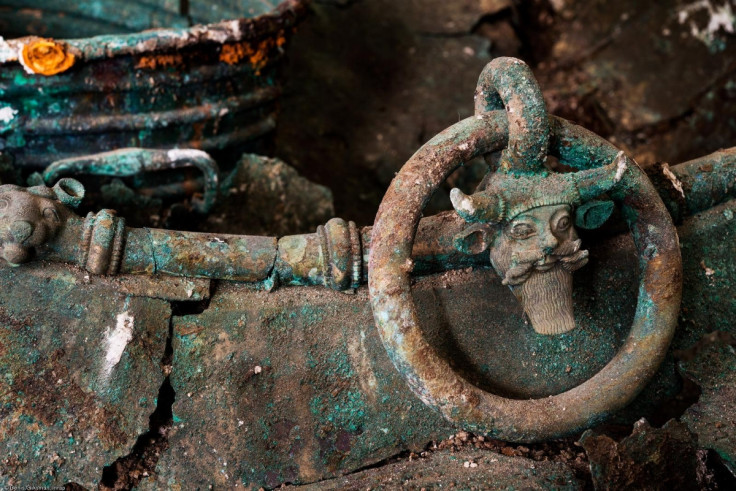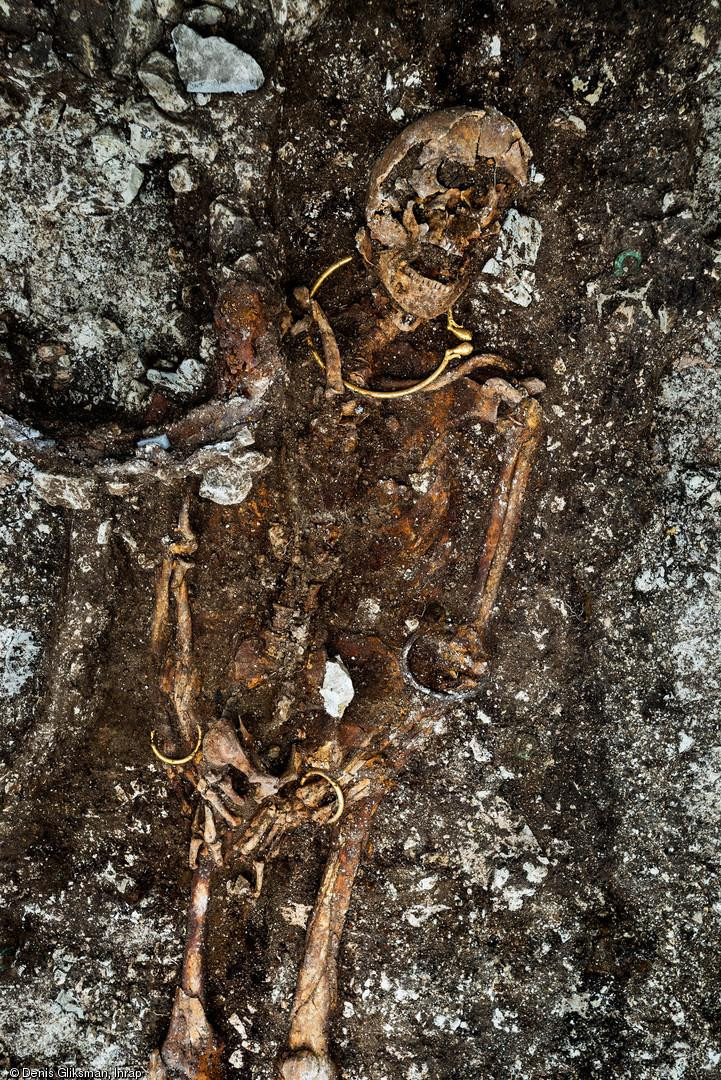Lavau Celtic prince: Inside the 5th century BC tomb that could reveal secrets of ancient civilisation

On 5 March 2015, French archaeologists revealed to the world the presence of one of the most important discoveries in more than 50 years.
Following the exploration of a site near the village of Lavau, the remains of a huge Celtic funerary chamber, which must have belonged to an important leader, began to emerge from the depths of the earth. The importance of this find can be compared to 1953's discovery of grave belonging to the so-called 'Lady of Vix'.
A year on, the Lavau Prince has revealed many of his secrets to archaeologists, but a lot of mysteries remain. They hold the key to a better understanding of the Celtic civilisation that lived at the time, in the 5th century BC.
The Celtic prince's last residence
In 2012, the grounds near Lavau, in the heart of a small businesses industrial park, were searched for archaeological artefacts. This was part of a mandatory process before constructions were allowed to take place in the area.
What archaeologists discovered exceeded their expectations: the well-preserved Greek and Etruscan relics they found gave the French state a reason to order a more detailed exploration of the site.

A team from the National Institute of Archaeology (INRAP), led by Bastien Dubuis, conducted the excavation operation, which started in October of that year. By November, they had made their first significant discovery: a beautiful bronze cauldron, decorated by Dionysus' head, at the centre of a 40m-diameter burial mound.
"By then, we knew we were not on an ordinary site, but a very important, well conserved funerary chamber. Its sheer size, and the luxurious aspect of the objects, told us this was probably the last residence of a major Celtic political or religious leader" Dubuis told IBTimes UK.

Further investigation led the team to discover more objects, including bronze dinner sets, delicately decorated ceramic platters, elaborate Greek vases and, finally, the deceased's remains, resting on his ornate chariot and still wearing golden jewels. From then on, he was referred to as the Lavau Prince.
Funerary objects and their secrets
More than the discovery in itself, the archaeologists are enthusiastic as so many well-preserved objects can teach them a lot about 5th century BC Celtic civilisation.

"Discovering the site and the prince were of course key moments, but I also remember the moment we got the bronze cauldron out from the Earth with great emotion. The Greek vase we found inside it is really rare, so it was impressive to put our hands on such a well-conserved one," recalls Dubuis.
The fact the deceased possessed such an object confirmed his important status. But the vase also hid another secret, crucial to historians. Analysis of the chemical compounds inside it revealed it had not been filled with local drinks, such as hydromel, like the archaeologists thought. Instead, they discovered traces of red wine, a drink only produced in the city of Marseilles or in Italy and costly to import.
It provides researchers with evidence that a well-established trade network and trade routes were already in effect at the time. This was confirmed as silver objects made in foreign lands were also gathered in the tomb.
"When we pierce through these objects' secrets, we discover that this funerary tomb is a reflection of the world economy at the time, and this is fascinating for those who study this era," said Dubuis.
The prince's secrets
Men or women? This was the first question that came up when the archaeologists discovered the prince. The luxurious bracelets found in the tomb initially suggested that the tomb's inhabitant was a woman, but an analysis of the pelvic bones suggest it was actually a man. DNA samples will now be taken and analysed to confirm this.

The teeth and the bone structure of the prince also revealed that he was in his forties, in good health and quite tall. The only injury he seemed to have sustained is a broken collarbone. His jewellery and burial outfit were not what archaeologists expected, suggesting they might still have things to learn about burial traditions.
The interest now is in comparing his DNA with the DNA of other royal remains found in the region, near the city of Troyes. "It is exciting because the DNA should give us clues about the organisation of this land, and of the society there," said Dubuis. If he and his teams see a similarity with other remains, they will know that the territory belonged to the same powerful family and, if not, that there was probably a violent power struggle between the clans in the area.
The excavation of the site finished in April 2015, and all the objects have been found. But on the first anniversary of the discovery, the archaeologists still have a lot of mysteries to solve. "Analysing DNA and sediments found in the tomb, we will now try to let what's invisible speak, we will try to understand the secrets and the culture of this civilisation," Dubuis revealed.
One question will probably never be answered though. The name of the Prince, and who he really was, will probably never be known, because Celtic cultures only had an oral tradition, and never wrote down any of their history.
© Copyright IBTimes 2025. All rights reserved.






















